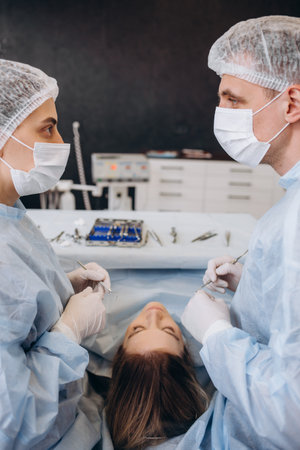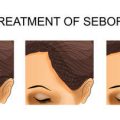Introduction to Medical Aesthetics in the UK
Medical aesthetics has become an integral part of the modern self-care landscape across the UK, with a growing number of individuals opting for non-surgical and minimally invasive procedures to enhance their appearance. Popular treatments such as anti-wrinkle injections, dermal fillers, chemical peels, and laser therapies are now widely accessible in clinics throughout cities like London, Manchester, Birmingham, and beyond. While these procedures are generally well-tolerated and can offer subtle yet effective results, it is crucial for UK patients to be fully informed about the potential risks involved. Understanding both common and rare side effects helps ensure realistic expectations and supports safe decision-making. As regulations and standards continue to evolve in the British medical aesthetics sector, transparency around side effects—whether frequent or infrequent—remains a cornerstone of ethical practice. This comprehensive guide aims to equip prospective patients with clear, relevant information tailored to the UK context, empowering them to navigate their aesthetic journey with confidence.
2. Understanding Common Side Effects
When considering medical aesthetics treatments in the UK, it is essential for patients to be well-informed about the side effects they may encounter. Most commonly, these reactions are mild, predictable, and resolve within a short period post-procedure. Here, we provide a detailed explanation of frequently encountered side effects such as redness, swelling, and bruising—helping UK patients set realistic expectations for their recovery.
What Are Common Side Effects?
Common side effects refer to those that occur frequently among patients following non-surgical cosmetic treatments like dermal fillers, anti-wrinkle injections, or skin resurfacing procedures. These reactions are usually temporary and considered a normal part of the healing process.
Main Side Effects Explained
| Side Effect | Description | Duration | Management Advice (UK context) |
|---|---|---|---|
| Redness | Mild to moderate redness at the treatment site due to increased blood flow and minor skin trauma. | Few hours to 2 days | Avoid hot showers or strenuous activity; use a cool compress if needed. |
| Swelling | Localised puffiness around the area treated, especially common with injectables. | 1–3 days (occasionally up to a week) | Apply a cold pack intermittently; sleep with head slightly elevated the first night. |
| Bruising | Purple or blue discolouration caused by tiny blood vessels breaking under the skin’s surface. | 5–7 days (sometimes longer) | Avoid alcohol and certain medications pre-treatment; arnica gel may be recommended by your practitioner. |
Setting Realistic Expectations for UK Patients
The majority of UK patients can expect some degree of these common side effects following their chosen aesthetic procedure. Clinics will provide aftercare instructions tailored to the British climate and lifestyle—for example, minimising exposure to cold winds or direct sunlight immediately post-treatment. Understanding these typical side effects helps manage anxiety and ensures a smoother recovery journey. If any reaction persists longer than expected or worsens, it is always advisable to contact your local practitioner for reassurance and further guidance.

3. Rare but Serious Side Effects
While most patients undergoing medical aesthetic treatments in the UK experience only mild and temporary side effects, it is crucial to be aware of rare but potentially serious risks. These complications, though uncommon, can have significant consequences and require immediate attention from a qualified healthcare professional.
Allergic Reactions
Allergic reactions to injectable fillers or other aesthetic products are rare but possible. Symptoms may include severe swelling, redness, itching, hives, or even difficulty breathing. In the UK, reputable clinics routinely perform thorough consultations and patch testing when indicated to minimise these risks. Should you notice any signs of an allergic response after treatment, seek urgent medical help without delay.
Vascular Complications
One of the most serious risks associated with dermal fillers and other injectables is inadvertent injection into a blood vessel. This can lead to vascular occlusion, which may compromise blood flow and cause tissue damage or, in extremely rare cases, blindness. UK-trained practitioners are highly skilled in advanced techniques to reduce this risk and are equipped to manage complications promptly if they arise. Nonetheless, patients should be informed about warning signs such as severe pain, sudden blanching or discolouration of the skin, or visual disturbances post-procedure.
Infection
Although strict hygiene standards in UK clinics make infection exceedingly rare, it remains a potential complication. Signs of infection include increased redness, warmth, pus formation, or fever. Prompt assessment and treatment with antibiotics may be required.
Other Notable Rare Risks
Additional rare side effects include granuloma formation (small lumps under the skin), delayed hypersensitivity reactions, and long-term scarring. While these events are exceptional in experienced hands, full disclosure ensures that patients can make informed decisions regarding their care.
It is always advisable for UK patients to choose registered practitioners with specialised training in aesthetics and to follow all aftercare instructions meticulously. Understanding both common and rare risks empowers individuals to approach medical aesthetics safely and confidently.
4. Patient Safety and Regulation in the UK
When considering medical aesthetics, understanding how patient safety is safeguarded in the UK is crucial for making informed decisions. The UK has a robust regulatory framework to ensure high standards of care, practitioner qualifications, and patient protection, particularly when discussing the common versus rare side effects associated with aesthetic treatments.
The Role of UK Regulatory Bodies
Several organisations oversee the medical aesthetics sector in the UK, each playing a vital part in regulating practice and protecting patients. The following table summarises their primary responsibilities:
| Regulatory Body | Key Responsibilities |
|---|---|
| Care Quality Commission (CQC) | Registers and inspects clinics providing surgical and certain non-surgical treatments to ensure compliance with safety standards. |
| General Medical Council (GMC) | Regulates doctors performing aesthetic procedures, ensuring they adhere to professional and ethical guidelines. |
| Joint Council for Cosmetic Practitioners (JCCP) | Sets industry standards for practitioners and maintains a voluntary register for qualified professionals in non-surgical aesthetics. |
| Healthcare Improvement Scotland (HIS) | Oversees independent clinics in Scotland, ensuring safe practice and quality care. |
Practitioner Qualifications: What Patients Should Know
The range and complexity of medical aesthetic treatments demand appropriately trained practitioners. In the UK, it is recommended that patients seek treatment from individuals registered with recognised bodies such as the GMC (for doctors), NMC (for nurses), or GDC (for dentists). Membership or accreditation with professional associations like the British Association of Cosmetic Nurses (BACN) or the British College of Aesthetic Medicine (BCAM) further demonstrates commitment to best practice.
Essential Qualifications Checklist for Patients
- Medical degree or nursing/dental qualification relevant to the procedure
- Registration with appropriate governing body (e.g., GMC, NMC, GDC)
- Evidence of ongoing training in aesthetic medicine
- Professional indemnity insurance
- Clear consent processes and complication management protocols
Safeguarding Patient Welfare
The UK’s emphasis on patient welfare means that clinics are required to provide clear information about potential side effects—both common and rare—prior to treatment. Informed consent is central; reputable practitioners will discuss risks openly, offer written documentation, and answer all patient queries. Furthermore, adverse events must be reported according to national guidelines, enabling ongoing improvement of safety standards across the sector.
Conclusion: Navigating Medical Aesthetics Safely in the UK
By choosing regulated clinics and qualified practitioners, UK patients can minimise risks associated with medical aesthetics. Adhering to established regulations ensures that both common and rare side effects are managed professionally, safeguarding patient wellbeing at every stage of the treatment journey.
5. What to Do if You Experience Side Effects
Guidance for UK Patients on Recognising Side Effects
It is crucial for patients in the UK considering medical aesthetics to be well-informed about both common and rare side effects. Recognising these symptoms early can help you manage your recovery more effectively and ensure your safety. Common side effects such as mild swelling, redness, or bruising at the treatment site often resolve within a few days. However, rare side effects like severe allergic reactions, persistent pain, or unusual skin changes should not be ignored. Pay close attention to any new or worsening symptoms following your procedure.
Self-Care Tips for Managing Mild Side Effects
- Cold Compress: Gently applying a cold pack can help reduce swelling and discomfort.
- Avoid Touching or Rubbing: Refrain from touching the treated area unnecessarily to prevent irritation or infection.
- Stay Hydrated: Drinking plenty of water supports the body’s natural healing process.
- Pain Relief: Over-the-counter pain relievers such as paracetamol can be used if needed, but always follow the manufacturer’s instructions and avoid anti-inflammatory medications unless advised by your practitioner.
When to Consult a Healthcare Professional
If you experience any of the following, it is important to seek prompt medical advice:
- Severe or worsening swelling, redness, or pain
- Signs of infection such as pus, fever, or increasing tenderness
- Difficulty breathing, chest pain, or dizziness
- Persistent lumps, discolouration, or numbness in the treated area
How to Access Support in the UK
If you are concerned about a side effect, contact your aesthetic practitioner as your first point of call. Many clinics in the UK offer aftercare advice lines. For urgent concerns, ring NHS 111 for professional guidance or visit your local A&E department if you believe it is an emergency. Prompt action helps ensure optimal outcomes and minimises risks associated with both common and rare side effects.
6. Conclusion: Making Informed Choices
As medical aesthetics continue to gain popularity across the UK, understanding the spectrum of common and rare side effects is paramount for anyone considering these treatments. Weighing the benefits and potential risks is not merely a box-ticking exercise, but a crucial step in ensuring patient safety and satisfaction. While many individuals experience only mild or temporary side effects, it is essential to remain vigilant about rarer complications that, although uncommon, can have significant consequences.
Final decisions should always be guided by open and honest dialogue with qualified practitioners who are registered with recognised UK regulatory bodies such as the GMC or NMC. Ask thorough questions, seek clarification on all potential outcomes, and ensure you receive comprehensive pre- and post-procedure guidance tailored to your needs. This collaborative approach empowers you to make choices that align with your health priorities and aesthetic goals, minimising surprises and maximising positive results.
Ultimately, informed consent is the cornerstone of any successful medical aesthetic journey. By proactively engaging in conversations about both common and rare side effects, UK patients can confidently navigate their options within a robust framework of professional care and ethical standards.

